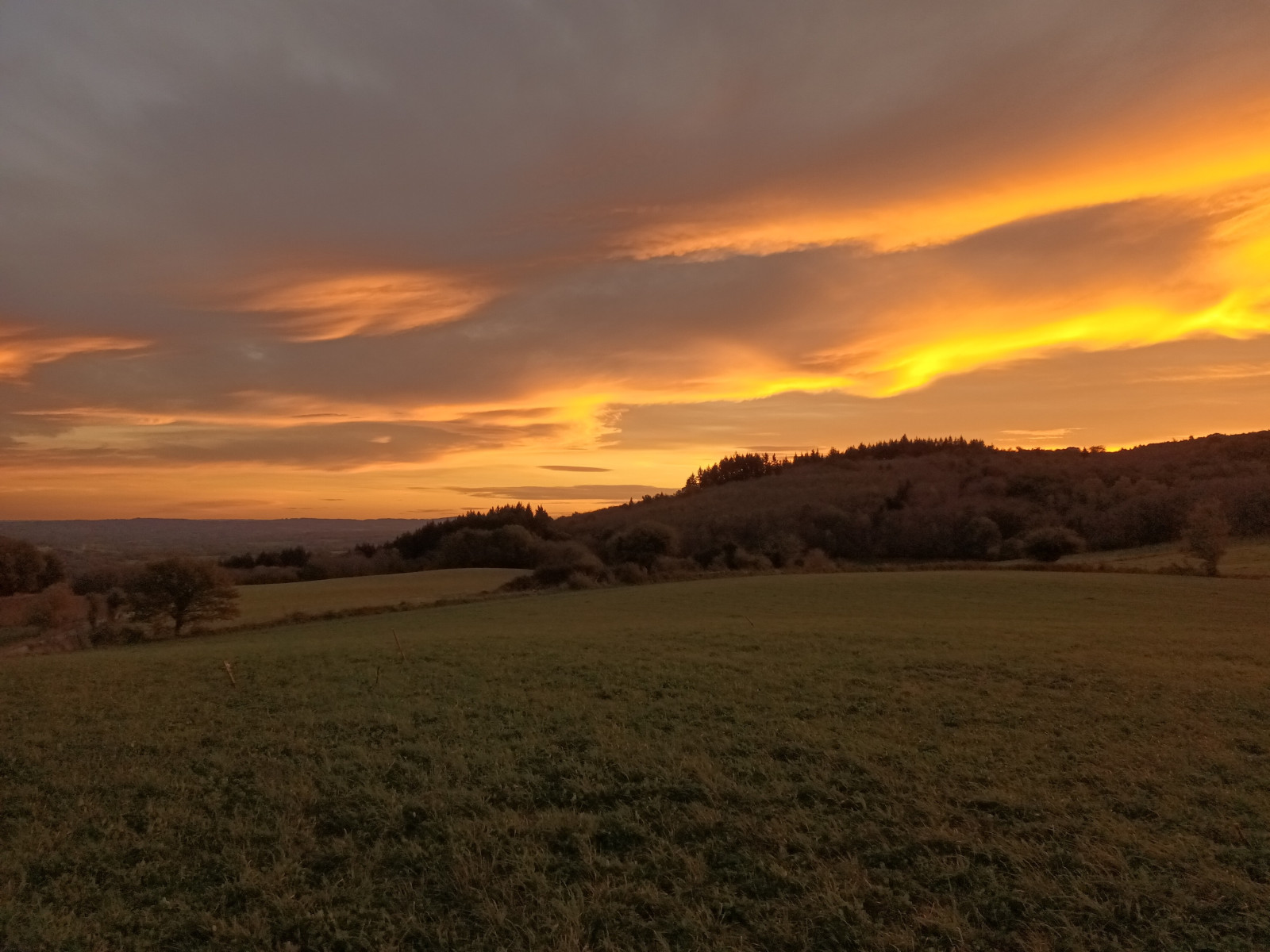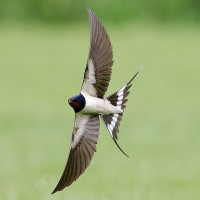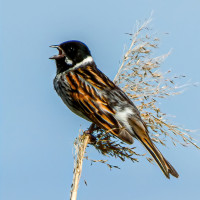Beschreibung
Le Roudeau looks like a pass, migratory birds are channeled by the relief in the autumn. The site is of great interest for bird watching when the wind is from the south. The birds are thus channeled by the relief and migrate at ground level, offering excellent observation conditions. Finches migrations (Buchfink, Bergfink, Bluthänfling, Erlenzeisig, Stieglitz), Columbidae (Ringeltaube, Hohltaube), turdids (Singdrossel, Rotdrossel, and the Ringdrossel regularly seen at stopovers), and alaudids (Feldlerche in particular) are sometimes spectacular. The site is also of great interest for observing the migration of raptors, Rohrweihe, Wiesenweihe, Kornweihe and Wespenbussard in particular. Other gliders are not left out, Schwarzstorch regularly flies over the site in late summer and Kranich regularly uses the corridor in October-November.
_________________________
Français: Site d'observation de la migration postnuptiale des oiseaux. Les monts de Saint-Vaury constituent les derniers contreforts Ouest du Massif Central. Le site ressemble à un col, les oiseaux migrateurs sont à l'autome canalisés par le relief. Le site présente un fort intérêt pour l'observation des oiseaux lorsque le vent est de Sud. Les oiseaux sont ainsi canalisés par le relief et migrent au ras du sol, offrant d'excellentes conditions d'observation. Les migrations de fringilles ( Buchfink , Bergfink , Bluthänfling, Erlenzeisig , Stieglitz), colombidés ( Ringeltaube, Hohltaube), turdidés ( Singdrossel, Rotdrossel, et le Ringdrossel régulièrement vu en halte), et alaudidés ( Feldlerche notamment) sont parfois spectaculaires. Le site présente également un fort intérêt pour l'observation de la migration des rapaces, les busards ( Rohrweihe, Wiesenweihe, Kornweihe et la Wespenbussard notamment. Les autres planeurs ne sont pas en reste, la Schwarzstorch survole régulièrement le site en fin d'été et la Kranich empreinte régulièrement le couloir en octobre-novembre.
Details
Zugang
Easy access by car, possibility to park on the observation site. Click on the P in the map to get directions or coordinates.
_________________________
Français: Accès aisé en voiture, possibilité de se garer sur le site d'observation. Cliquez sur le P sur la carte pour obtenir des directions ou des coordonnées.
Terrain und Habitat
Ebene , Grasland, Wiesen , Plateau , Vereinzelte Bäume und Büsche , Stadt/Dorf , LandwirtschaftBedingungen
Hügelig , Offene LandschaftRundweg
NeinIst ein Spektiv nützlich?
NeinGute Beobachtungszeit
HerbstBeste Beobachtungszeit
Herbstzug , HerbstRoute
asphaltierte StraßeSchwierigkeitsgrad der Tour
EinfachErreichbarkeit
zu Fuß , Fahrrad , Auto , RollstuhlBeobachtungshütten oder -türme
NeinZusätzliche Informationen
The landscape is made up of granite hills at an altitude of around 600m, dominating the foothills by 200m. The Puy des Trois Cornes (636m) is made up of 3 hillocks delimiting the observation area on the North-West part, bordered by the Bois de Chardet (609m) 3km to the South-East. These reliefs form two funnels, channeling the birds over two passes, preferably used in headwinds:
-The Peyroux pass, followed from the Roches orientation table, fitted out on a water catchment-reservoir. The site is ideal for observing large birds (Cranes, Cormorants, Storks, Raptors, Pigeons). The site is only used occasionally for monitoring autumn migration (environment now too confined), but is still suitable for spring migration.
-The Col du Roudeau (monitored regularly), is located on a communal track bordered by large meadows. In headwind conditions, the birds concentrated in the funnel often pass low to the ground, providing exceptional viewing conditions for migrating or staging passerines.
_________________________
Français: Le paysage est constitué de collines granitiques de 600m d'altitude environ, dominant de 200m le piémont. Le puy des Trois Cornes (636m), est composé de 3 mamelons délimitant la zone d'observation sur la partie Nord-Ouest, bordé par le Bois de Chardet (609m) à 3km au Sud-Est. Ces reliefs forment deux entonnoirs, canalisant les oiseaux sur deux cols, préférentiellement utilisés par vent contraire :
-Le col du Peyroux, suivi depuis la table d'orientation de Roches, aménagée sur un captage-réservoir d'eau. Le site est idéal pour l'observation de grands oiseaux (Grues, Cormorans, Cigognes, Rapaces, Pigeons). Le site n'est qu'utilisé qu'occasionnellement pour les suivis de la migration postnuptiale (milieu désormais trop renfermé), mais convient encore pour la migration prénuptiale.
-Le col du Roudeau (suivi régulièrement), se situe sur une piste communale bordée de grandes prairies. Par vent contraire, les oiseaux concentrés dans l'entonnoir passent souvent au ras du sol, offrant des conditions d'observation exceptionnelles pour les passereaux en migration ou en halte.


